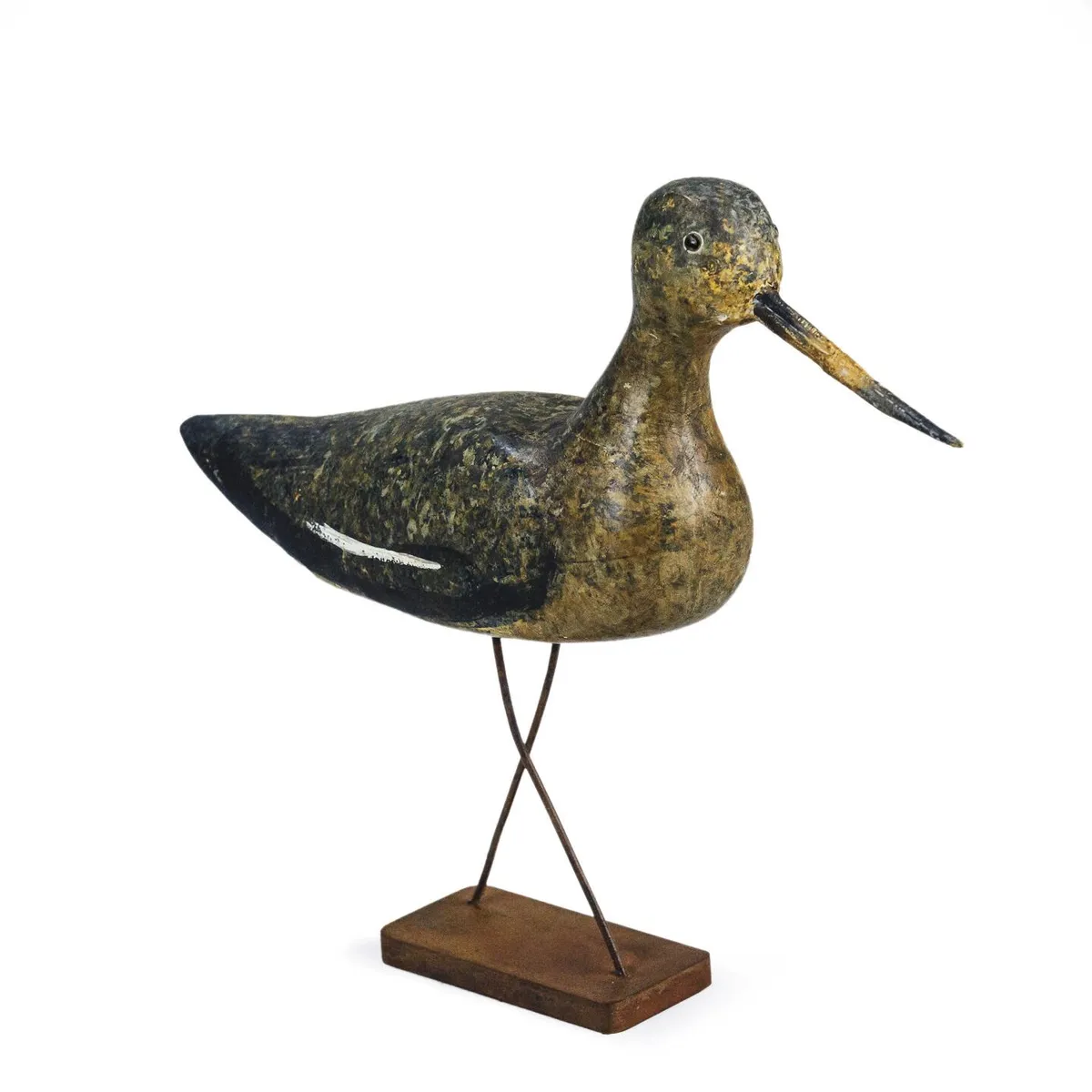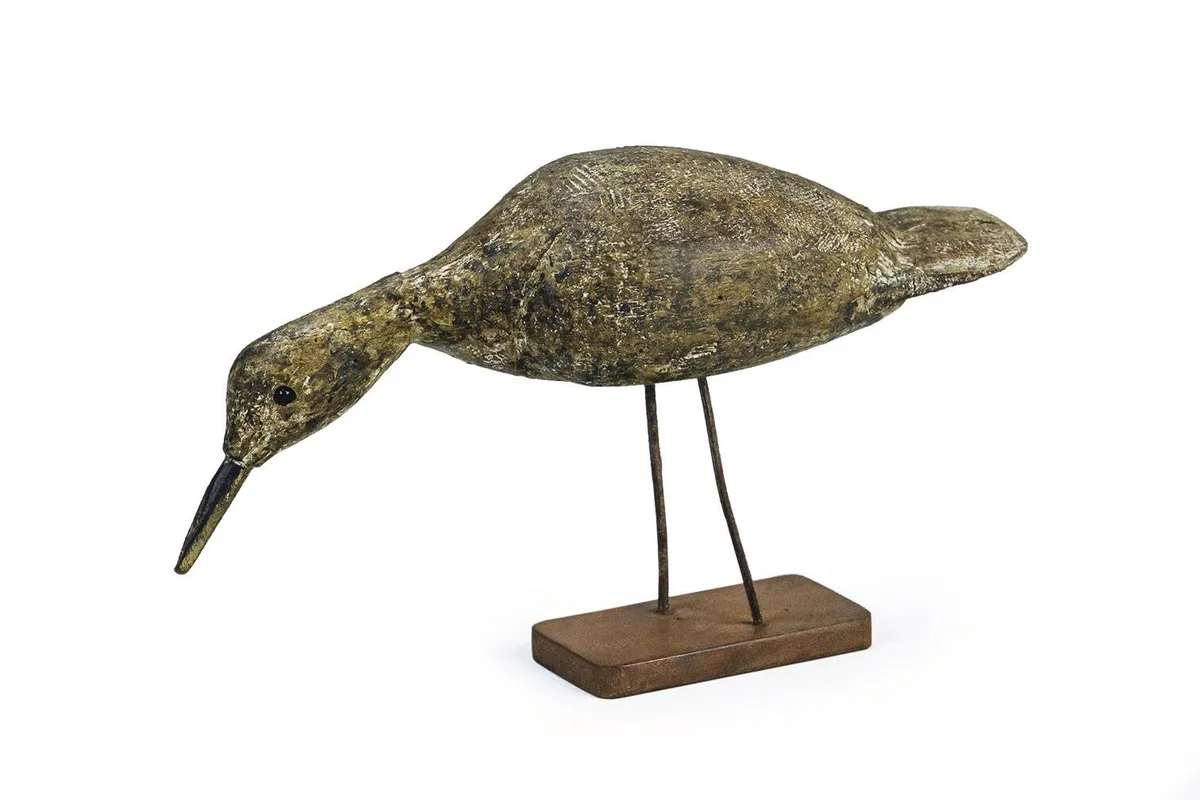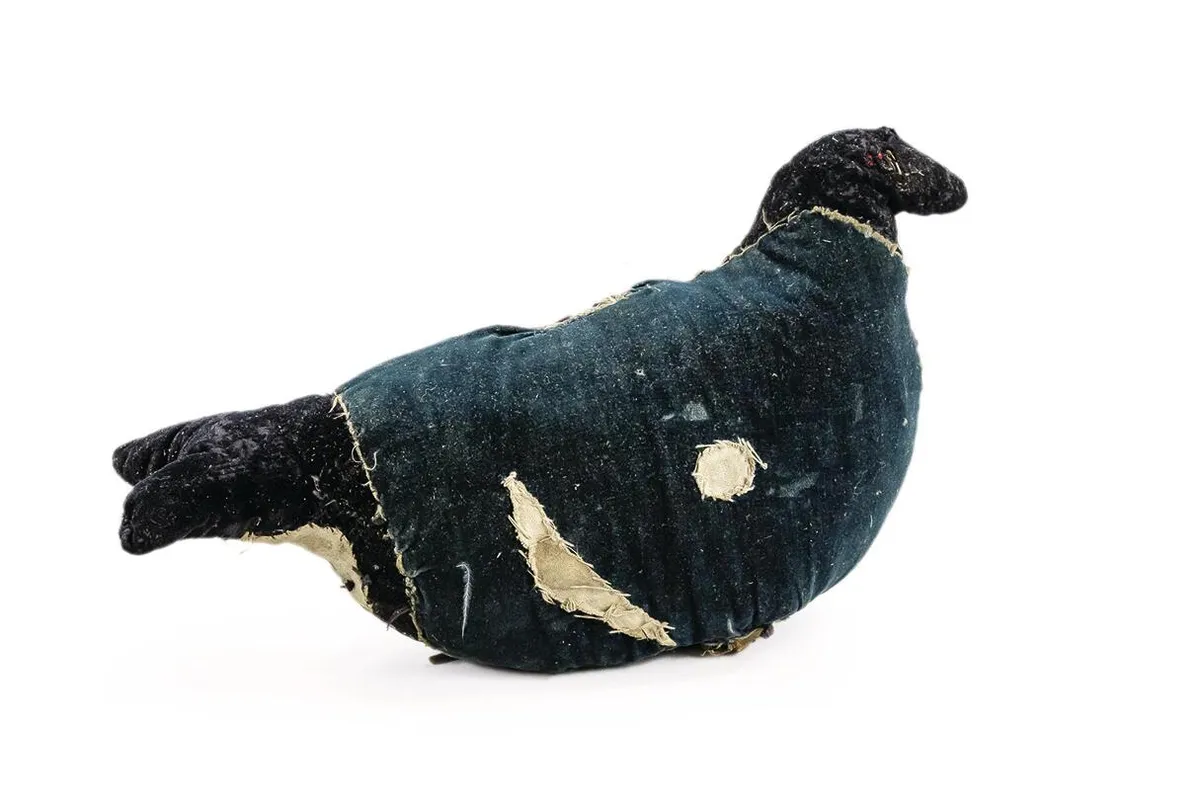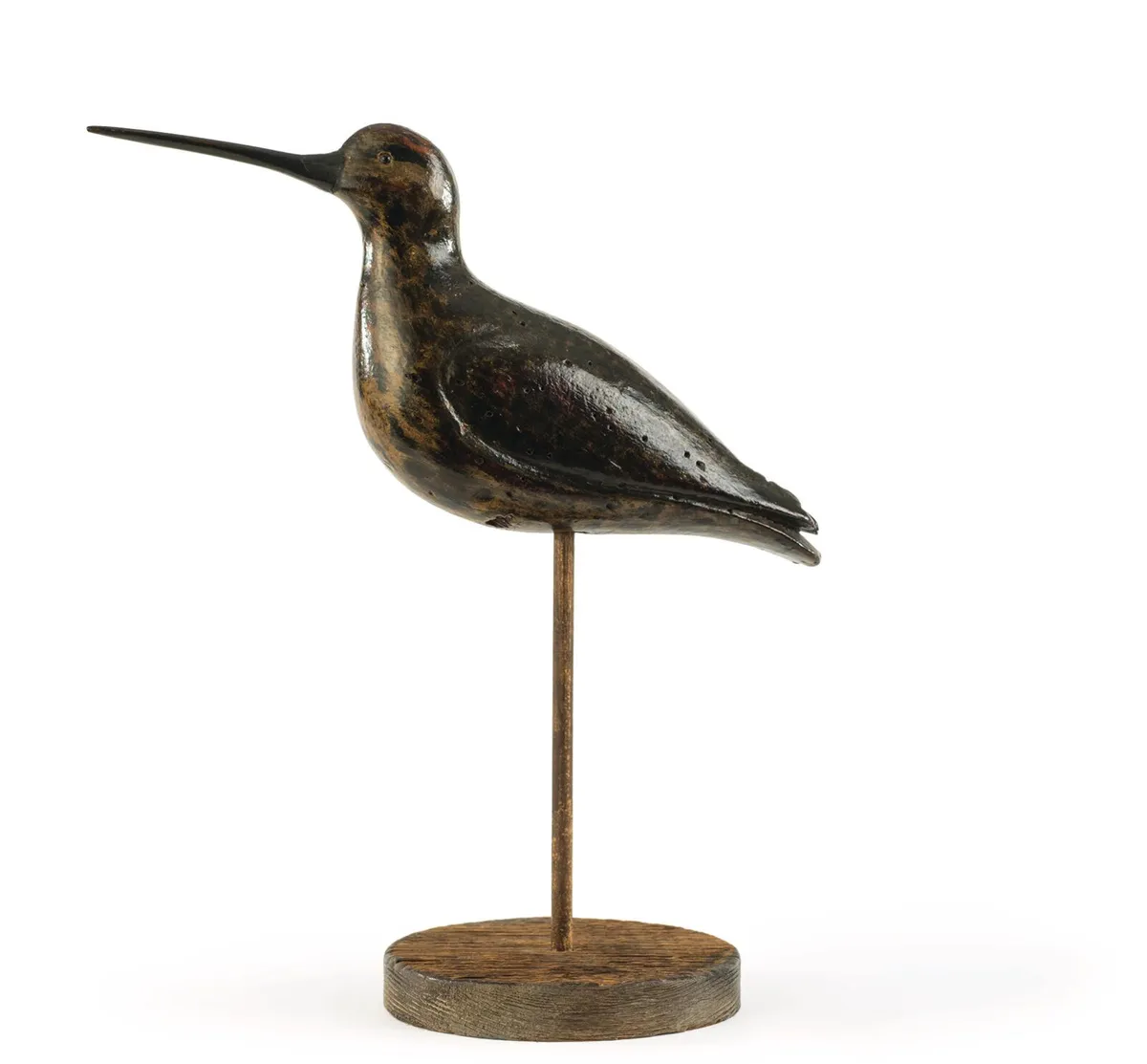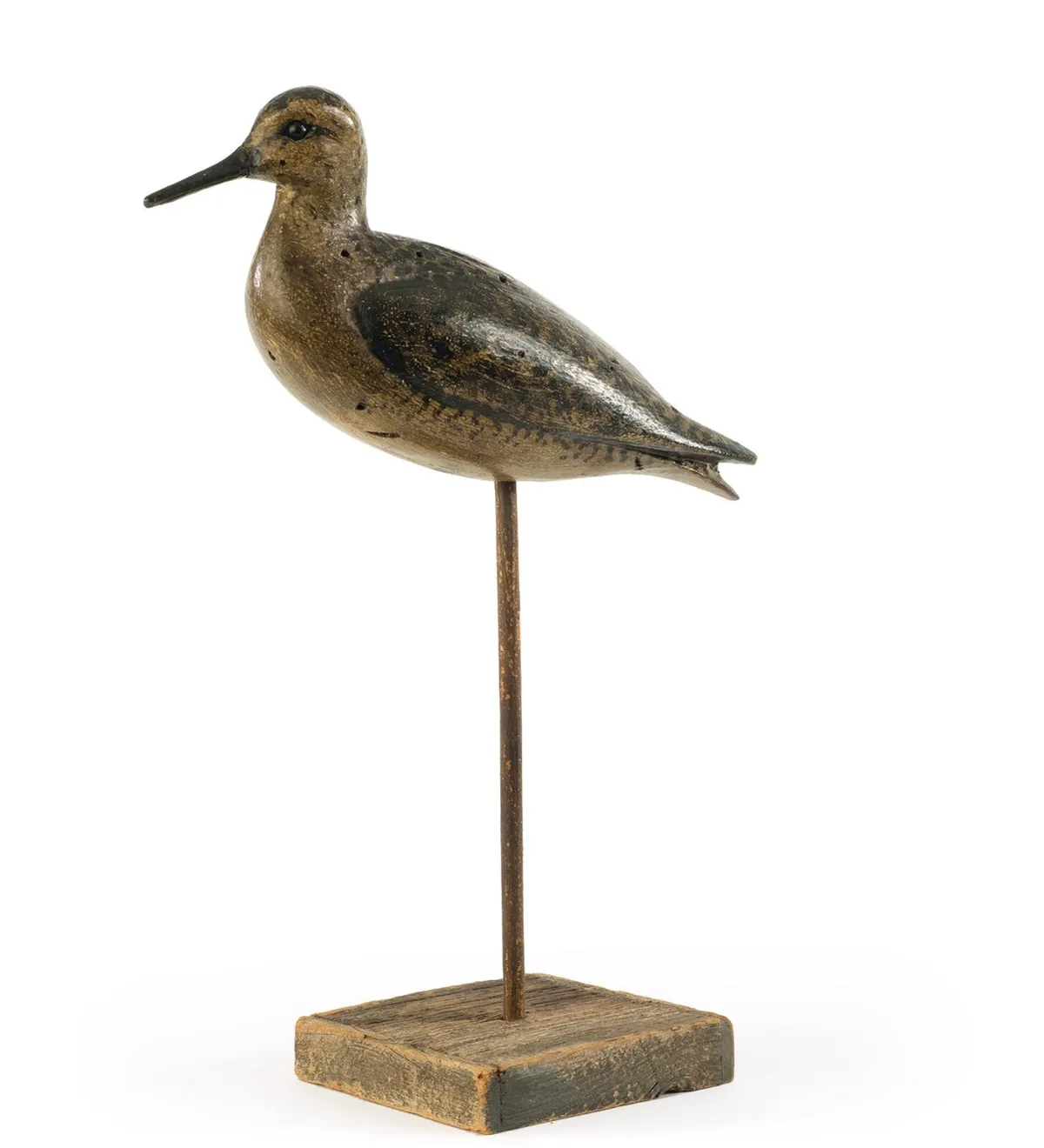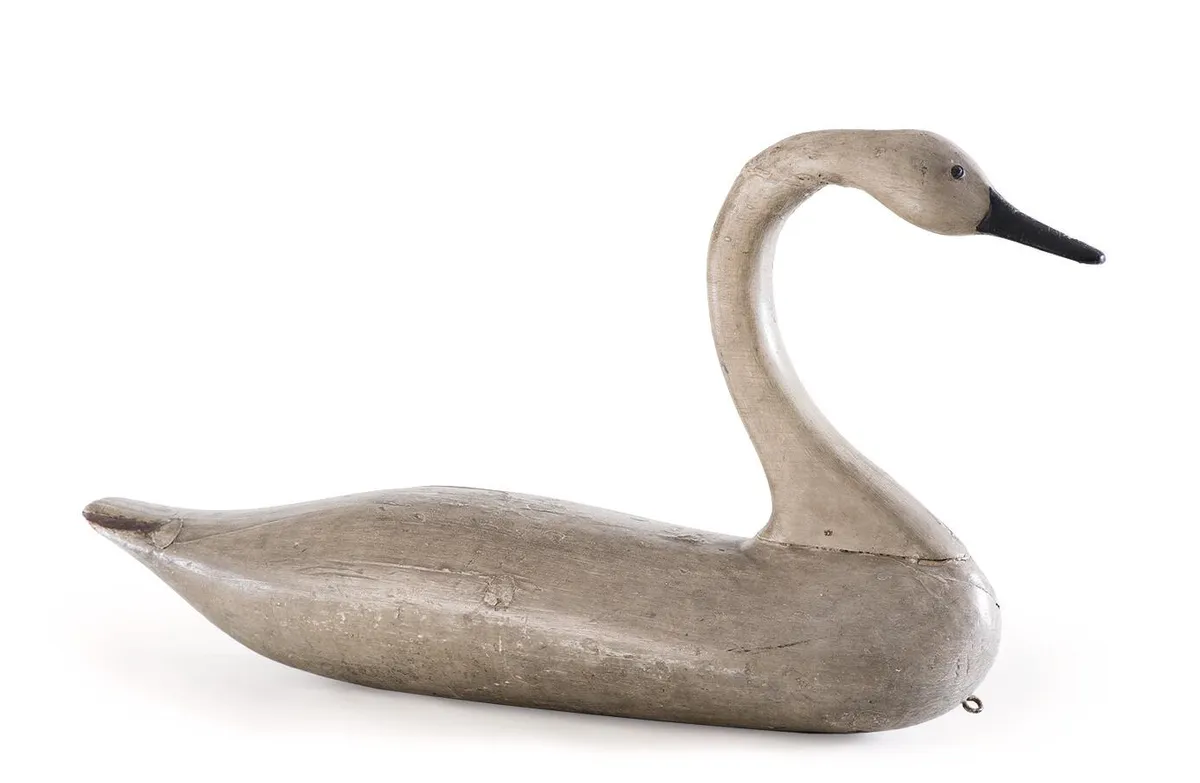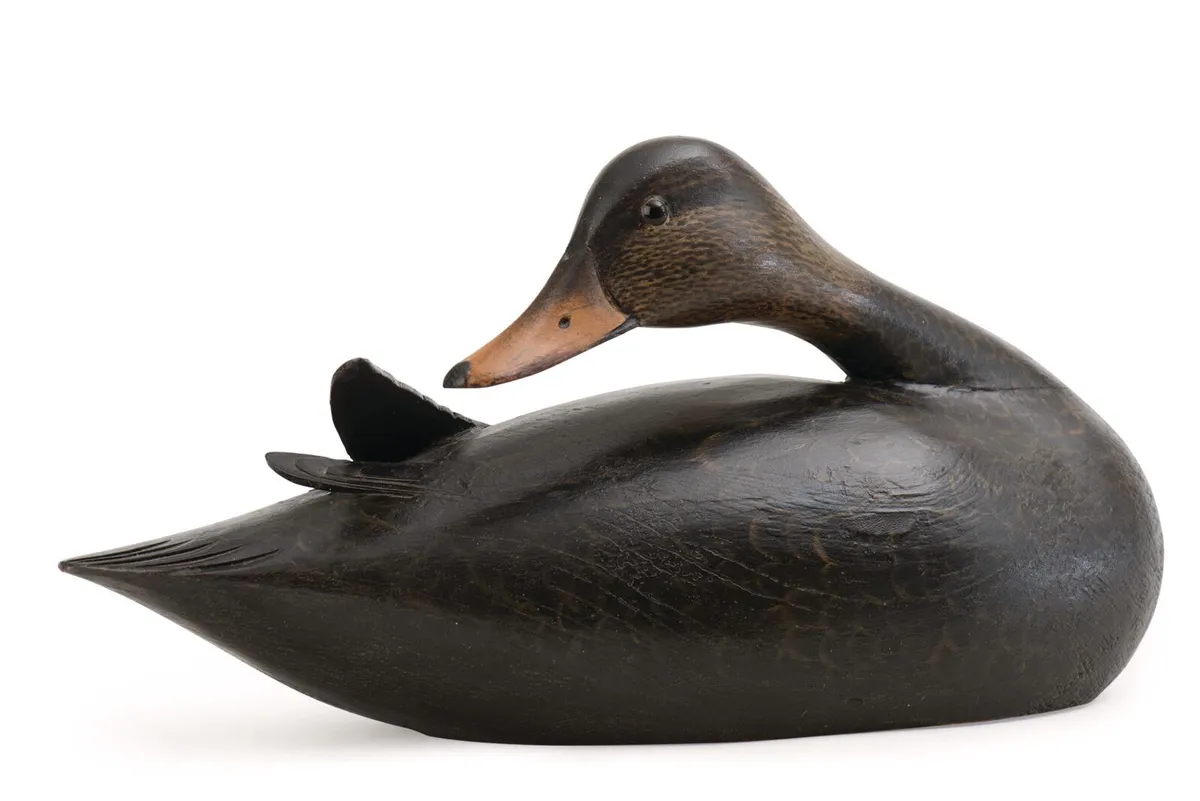No one has ever bothered about decoys as I have,’ wrote American Joel Barber in his 1934 book, Wild Fowl Decoys. For Barber, bird decoys weren’t just functional hunters’ tools, they were ‘floating sculptures’. Barber made it his life’s mission to transform the American public’s perception of decoys: he promoted their artistic and cultural merits on radio and television programmes, at specialist decoy events and exhibitions, and in books and magazine articles.
In the United States, Barber is credited with almost single-handedly elevating decoy ducks to the realm of folk art. It wasn’t always this way. British dealer Barney James, who sells bird decoys at The Home Bothy, explains that for centuries decoys were entirely utilitarian objects, valued for their ability to lure game birds into shooting range.
Decoys take advantage of birds’ instinct to flock together – they’re still used today, although decoys are now usually made of plastic. The artificial birds are set out on open ground or floated in groups – known as a ‘rig’ – to give passing birds the impression that there’s nothing to fear, while the guns lie in wait.
Historically, a wide range of ducks, geese and shorebirds were hunted for sport or for the table, so decoys encompassed many different species. So-called ‘confidence birds’ (easily spooked birds like gulls and herons) might also be included in a rig, even though they weren’t the target of the guns. Creating a realistic rig was a skill that hunters and gamekeepers worked hard to perfect.
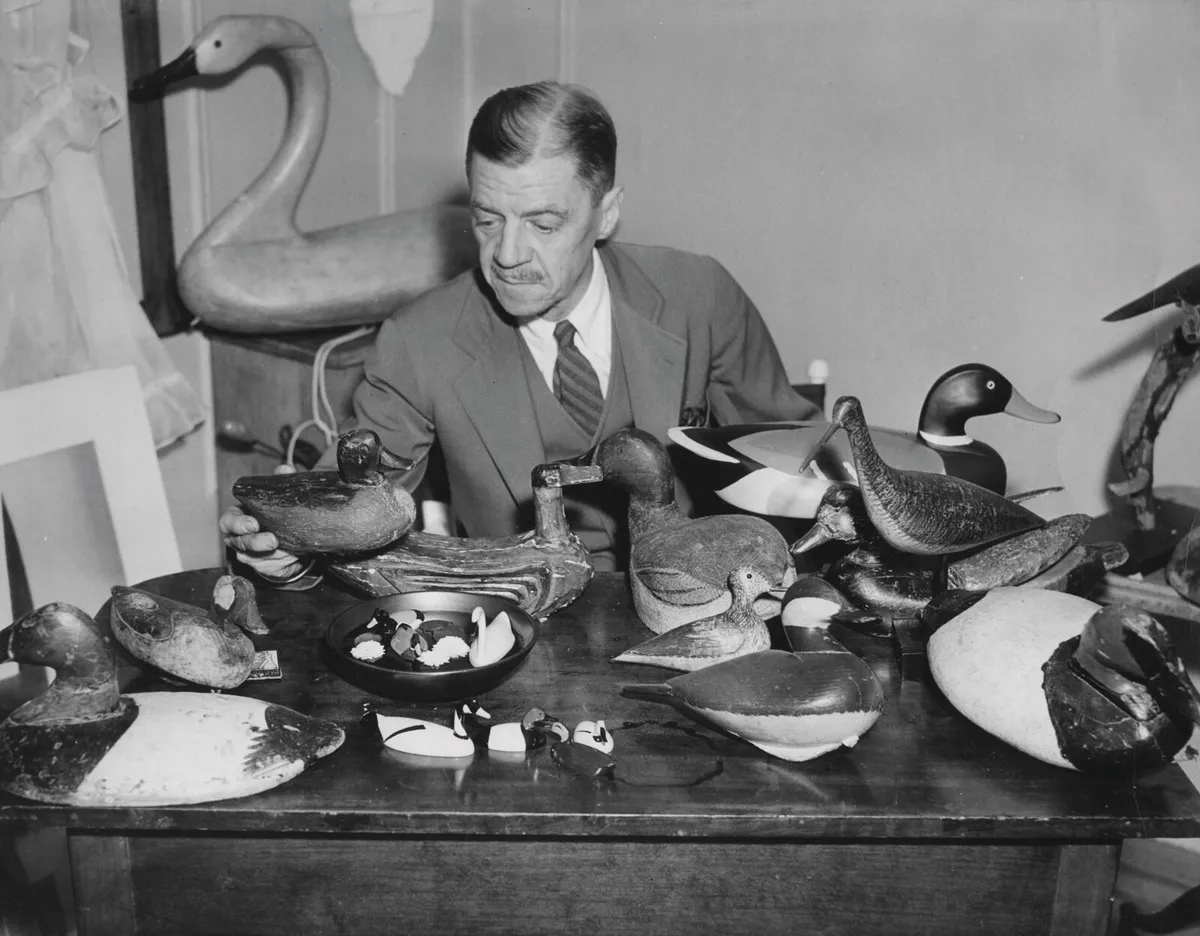
The people who made them would be totally flabbergasted to know they’re now sitting on people’s mantelpieces, thinks Barney. ‘Some working decoys could be very naïve; just gnarly pieces of wood. What mattered was that they made the silhouette of the bird against the foreshore. They were originally made in large numbers to get the right effect. Once the cheap, mass-produced decoys came along, some gamekeepers, desperate for warmth in the depths of winter, burnt their old carved decoys.’
For centuries in Europe, hunting rights have been controlled by powerful landowners. But in the wide-open spaces and skies of North America, white settlers roamed the marshes, rivers and plains freely, hunting for survival. It’s said they learned the use of decoys from the Native American people.
By the mid 19th century, professional hunters boasted of bagging hundreds of ducks a day from a seemingly inexhaustible supply. Packed in ice, the birds were sent via the newly expanded railroads to wealthy cities like New York, Boston and Chicago, to satisfy high-class diners’ appetite for game.
It couldn’t last, and species were pushed to extinction. In 1918, the US Congress prohibited the shooting of shore birds, limited the length of the hunting season and restricted the number of birds that could be taken each day. Commercial hunting consequently fell into decline. Until then, decoy-carving had been something to do in the slack season but now, for some entrepreneurial former hunters, it became an alternative source of income, with the best examples bought and traded by amateur hunting enthusiasts.
Decoys are now prized as a distinctively American form of folk art, which harks back to a lost way of life. They also evoke strong regional identities. Carvers would use locally sourced timbers, sometimes working with old barn beams, and made birds that would be hunted in their own communities. So, Americans aren’t just collecting generic American decoys, but a Canvasback from the Chesapeake, a Barnegat Canada Goose or a Black Duck from the Great South Bay.
In the last 20 years, deep-pocketed American decoy buffs have pushed prices sky-high. Top-end buyers compete for work by the most desirable early 20th-century carvers, like the Ward brothers, A Elmer Crowell, and Charles Perdew. They are the Van Goghs, Monets and Matisses of the decoy world – with prices to match. In 2018, Guyette and Deeter, one of several US auction houses dedicated to decoys, sold a mallard duck and drake by the sought-after Caines Brothers for $1,144,600 for the pair.
Astonishing though that price tag sounds, in 2007, a Pintail Drake and a Canada Goose by A Elmer Crowell made a staggering $1m each.
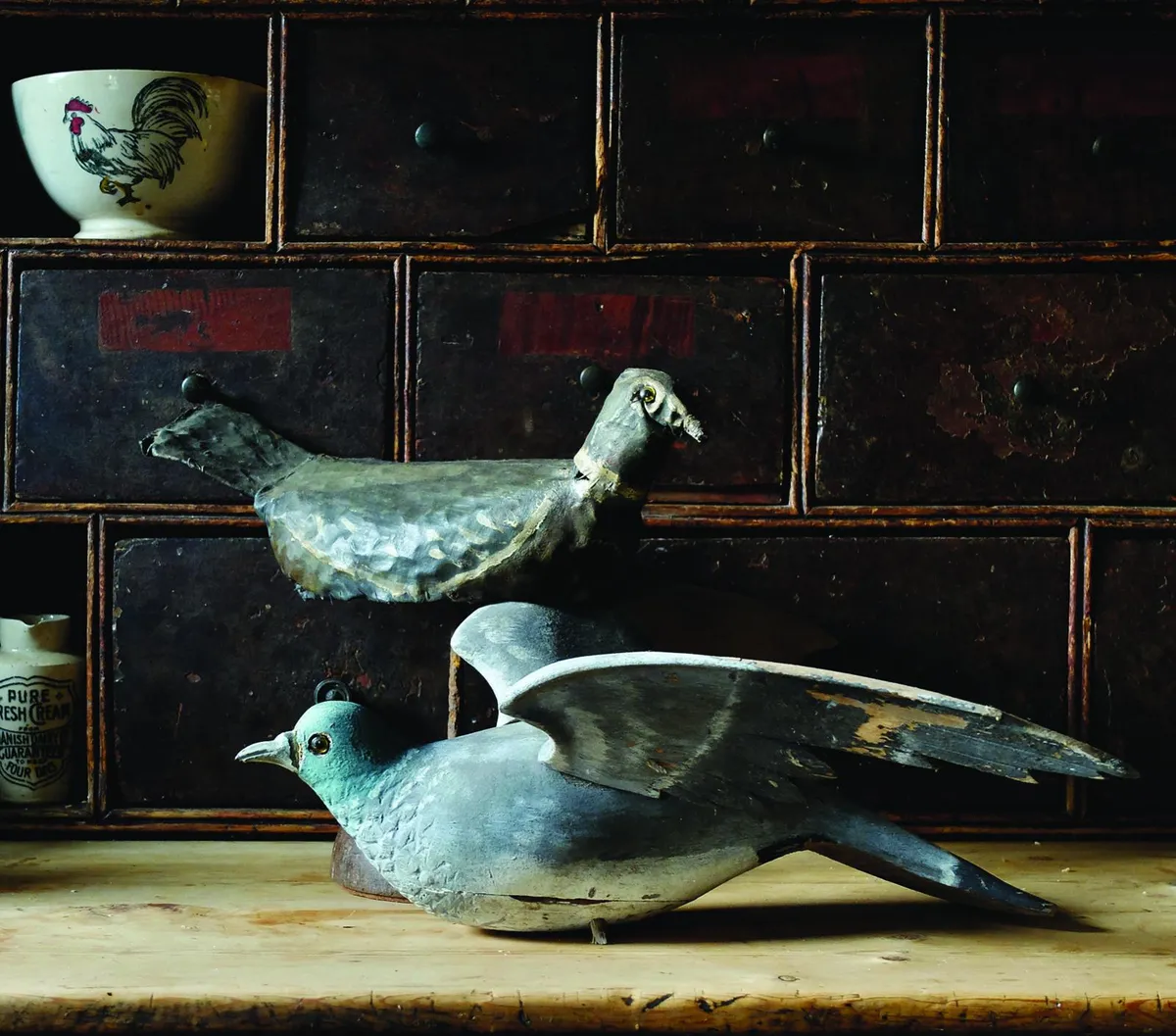
The European decoy market is a little different, explains Barney. Here, the taste tends to be for working decoys. They show lots of wear and tear from spending hours in the water, being shot at, thrown into a sack over the gamekeeper’s back, and stored in a damp cellar or barn. Rob Slater who, with wife Jane, collects working decoys, loves the authenticity of ‘an untouched dry surface, historic paint, shot marks, repairs, chipped and flaking paint, indicating they have had a working life in the field, pond or sea.’
Rob is particularly drawn to pigeons, which have plenty of character and tend to be British-made. In the UK, pigeons were shot because they were a pest that destroyed crops, rather than solely as a game bird. Rob loves the variety of ways in which pigeon decoys were constructed and the personality this gives them – his collection ranges from a very basic canvas-and-chicken-wire bird, probably made in the 1940s, to a much smarter pigeon retailed by the gunsmith, Trulock and Harris.
In the UK, decoys sell at a fraction of the price of those in the US super-league, with auction prices starting at around £50 to £100 for a simply made duck in original condition. Rarer decoy birds, like pigeons and shorebirds, fetch more, but generally with prices in the hundreds rather than thousands.
It’s also unusual for a British decoy to be attributed to a specific maker, says collector Rob. ‘There are a few names, like Harry Boddy, who was working in Kent, and William Jaggard and James and Francis Rolph in Suffolk. The birds themselves weren’t signed or stamped, but makers often worked to patterns, giving their birds a distinctive and recognisable profile.
For example, Harry Boddy had various patents for his decoys, including one that has a metal mounting spike that can be stored under its base. But there are very few resources for really studying the history of British decoy makers.’
There’s something very peaceful about a display of decoys, reflects Barney, especially when they’re mounted to show off their sculptural qualities. ‘With the best decoys, you can tell that the maker has really understood the bird, its spirit and its shape and movement,’ he continues. ‘They don’t try to depict accurate anatomical detail, but the carvers have spent a long time observing the birds in their natural habitats and have managed to reduce something quite complex to its simplest and most powerful form.’
